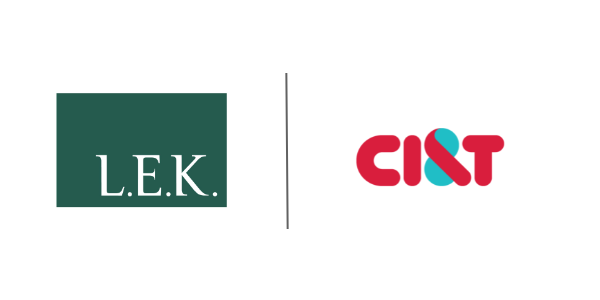

Omnichannel Engagement in Pharma — Key Success Factors and Case Examples
Authored in partnership with Loop Horizon and CI&T
- Article


Authored in partnership with Loop Horizon and CI&T
Pharma has long been on a journey of exploring channels beyond traditional face-to-face interactions and print media when engaging with healthcare professionals (HCPs). In particular, the last few years have seen an acceleration of digital engagement. This has been supported by changing engagement preferences among HCPs, with more and more ‘digital natives’ welcoming virtual interactions.
Pharma confidence in juggling traditional channels with digital means is certainly increasing. Yet true omnichannel engagement — the integration, orchestration and tailoring of customer interactions across multiple channels to match HCPs’ profile-specific needs — has been the Cinderella of marketing activities. While multichannel engagement — the use of two or more channels that run relatively independently from one another — is increasingly in use, the omnichannel engagement model is altogether more dynamic and complex, and thus still not fully adopted by pharma (see Figure 1).
A number of related shortcomings have stood in the way of a true omnichannel experience in pharma.
The barriers to implementing a true omnichannel engagement are substantial. First, it is a tall order: Creating an omnichannel experience requires deep customer knowledge, mastery of relevant channels, powerful content for each channel, highly coordinated action across channels and the agility to adapt in response to customers’ feedback. It’s an ongoing learning process built on data, monitoring discipline and agility. This might require significant organisational changes both to a company’s operating model and its capabilities and supporting infrastructure — changes that are time-consuming, costly and potentially risky, and need to be balanced against an understandable reluctance to move away from tried and tested models.
Second, in light of the complexity of implementation, pharma companies require a vision — a reason to believe in the benefits of large-scale change — and best practice examples demonstrating the benefits of omnichannel and providing templates for how to realise them. Yet, benefits are all too often not sufficiently tangible, and success stories are rare. Pharma needs to look to other industries for inspiration.
However, momentum towards omnichannel engagement is increasing, building on powerful market trends and changing customer needs. Pharma companies are being forced to rethink the way they interact with customers, driven by the proliferation of technology and mobile connectivity, increasing experience with digital engagement, growing price pressure and the resulting need to increase the cost-effectiveness of engagement, and restricted sales rep access. This is paired with growing customer needs for on-demand and personalised content, agile support, and an increasing affinity with non-personal and digital forms of engagement (see Figure 2).
COVID-19 is accelerating this trend (i.e. the use of — and familiarity with — non-personal forms of engagement). It is fair to assume that the post-COVID-19 ‘new normal’ will be shaped by experiences during the pandemic, with non-personal channels continuing to play a key role. However, even then, the success of omnichannel lies not in replacing human interactions with digital ones, but in combining these and other channels to enhance the engagement and create seamless experiences for target audiences.
While efforts to define and implement omnichannel models are ongoing, examples of a successful full-scale omnichannel overhaul in pharma are rare. However, there are a number of early success stories of pharma companies establishing omnichannel approaches for specific segments or built on a small number of channels.
In order to increase its market share for oral contraceptives, a large pharmaceutical company planned to introduce an app to remind women to take their pill on a regular basis. However, a detailed analysis of usage data unveiled that, at the current rate, achieving the envisioned market share growth would take eight years instead of the anticipated 18 months; in addition, the company would have to get 10,000 new prescriptions a month to reach its growth target, which was deemed unachievable with an app alone.
Based on market research and advanced analytics, target audiences with the highest potential for growth were identified, and the company’s sales force was redeployed to higher-potential locations based on refined brick data. Resources were also redirected to focus more on patients, with direct outreach to increase brand awareness and engagement through patient support programmes, as well as content such as blog posts on pregnancy prevention.
The integrated approach leveraging multiple channels helped build greater connections between the organisation’s two target audiences, doctors and patients, and overall sales force effectiveness was increased. In addition, the extensive market analysis created excitement and support amongst senior leadership within the organisation, including shareholders and owners. Overall, the product saw a growth of 23% in volume from new customers as a result of the optimised channel mix.
In the diverse European pharmaceutical market landscape, characterised by country-specific rules and regulations around pharmacy engagement, drug manufacturers are often not able to engage with smaller pharmacies directly to build relationships and offer promotions or discounts.
Leveraging existing technology platforms such as Salesforce and SAP, a multinational pharmaceutical company created a business-to-business (B2B) engagement platform that would allow it to design and deliver locally compliant content to pharmacists across European markets end to end without the need to outsource to third parties. The platform was built on scalable and localised architecture for multiple sites and languages, respecting the legal and language requirements of each country, and offering localised content and personalised communication for targets.
Through a single unified platform for content development, content management, pricing and sales, the multinational pharma company was able to access information and align strategic and business objectives across Europe. Initially released in France, Belgium and Luxembourg, the sales enablement and educational platform for pharmacists reached US $1 million in revenues and registered more than 900 pharmacies in the first three weeks of operation.
A biopharma company planned to increase its reach and engagement with key HCP customers for a major dermatology product across its non-US markets in a highly efficient manner, leveraging existing customer intelligence and without increasing field force resources.
Based on its existing intelligence, four key HCP segments were identified and engaged with through an orchestrated campaign covering email, paid media, portals and partner channels. An automated loop was also created to re-engage or progress key messaging based on HCP behaviours.
Through this orchestrated campaign and loop, the company was able to increase its target audience reach by 29% and engagement by 53% over the course of 16 weeks.
Across the diverse and fragmented European market, a pharmaceutical company sought to increase the adoption of its mature respiratory product by improving the delivery and impact of its key messages.
Based on market research and analytics, a system of pre- and post-call rep-triggered events was created, allowing reps to choose further engagements and content appropriate to the particular HCP type, the desired key messages and the outcome of the call.
This systematic approach, combined with leveraging of the company’s Veeva software to automatically suggest content for follow-up email campaigns, resulted in increased email open rates among targeted HCPs by 46% and overall engagement by 73% over 10 weeks.
From early examples, we can derive some initial success factors for omnichannel.
The creation of a successful omnichannel model can trigger significant organisational and behavioural changes in pharma companies. A number of factors should be kept in mind during implementation.
Before developing an omnichannel model, pharma companies need to consider a number of trade-offs around market benefits, existing capabilities and cost. Omnichannel models are inherently complex, and complexity grows exponentially with each channel, customer segment and content customisation, creating the risk of overwhelming marketing teams. It is therefore critical that pharma companies carefully assess the degree of sophistication needed along a number of dimensions to develop a fit-for-purpose and actionable omnichannel approach (see Figure 3) .
Along each of these dimensions, trade-offs need to be considered. As an example, developing complex attitudinal segmentation is time-consuming and costly but allows more granular and potentially more effective messaging. When designing content, pharma companies need to strike a balance between providing meaningful content tailored to specific channels and customer segments, and the complexity of customisation, specifically as more channels and segments are added. Similarly, significant orchestration maximises omnichannel impact but is costly and time- consuming to implement, so returns on investment (ROI) need to be evaluated carefully.
Implementing a successful omnichannel strategy is by no means easy. L.E.K. Consulting , therefore, suggests approaching the omnichannel transition in a series of steps:
Based on project experience, we have developed a perspective on how each of the five steps can be successfully managed. Our approach defines six organisational and brand-specific capabilities which form the pillars of omnichannel engagement and combine to deliver an orchestrated engagement model: organisational vision and preparation, operating model, connected tech and data, customer intelligence, channels, and tailored content.
Omnichannel has the power to transform the way pharma companies engage with their customers and other key stakeholders, making interactions more meaningful, valuable and impactful for both sides. In order to not fall behind and to benefit from this dynamic, pharma companies need to start on this journey now to transform their engagement approach and, ultimately, themselves.
Luiz Cieslak, Vice President of Digital Solutions, CI&T
Loop Horizon is a consulting & technology company with expertise across Consumer, B2B and Health, and a strategic partner of L.E.K. Consulting. Loop Horizon guides companies in optimising their customer experiences through better combinations of data & intelligence and marketing technology, and supports process change to drive P&L benefit.
CI&T is a leader in driving digital transformation for global brands. For over 20 years, CI&T has been a trusted partner in helping Fortune 1000 companies drive growth and continuous innovation across business, people, and technology.